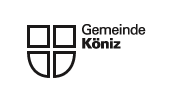Glossary
Average Swiss transport patterns
The average Swiss traffic volume comprises 44% leisure traffic, 28% commuter traffic, 11% shopping traffic, 8% business traffic or trips and 9% for the rest (source: Swiss statistical annual, 2007, figures from 2000)
Car
Motorists emit a lot of CO2 and constantly breathe in substances that are hazardous to health inside the car. Hybrid cars with low fuel consumption and low emissions are more environmentally friendly than cars with conventional petrol or diesel drives.
CO2
CO2 stands for carbon dioxide and is an invisible non-poisonous gas whose emissions are responsible for around two thirds of today’s climate change due to man. The CO2 content of the atmosphere is linked directly to its average temperature. Man changes the composition of the earth’s atmosphere by burning oil, coal and natural gas, thus releasing carbon dioxide and other greenhouse gases – so the climate heats up. To avoid average global temperatures from rising by more than 2°C, worldwide CO2 emissions must be reduced by 30% up to the year 2020 compared with the 1990 level.
Cost calculation
Commuting by train – commuting by car
Commuting 30 km by car:
45 working weeks * 5 days * 60 km = 13,500 km
Fuel consumption 8 l/100 km -> total 1080 l petrol * CHF 1.80 = CHF 1944.
Commuting 30 km by train:
Season ticket for 1 adult 2nd class Winterthur – Zürich or Thun – Bern, about CHF 1900.
Cycling
Regular exercise is good for you. You reduce your risk of high blood pressure by 30% and of cardiovascular diseases by as much as 50%. Anxiety states and stress are also alleviated by regular exercise.
Various studies show that motorists are exposed to high levels of harmful substances inside their cars. Even if we consider that cyclists have a two to three times greater respiratory volume due to the effort of cycling, they inhale fewer noxious substances than motorists. They can also cope better with the effects of air pollution thanks to their physical training.
Eco current
This refers to current from renewable energy sources. These include solar, wind, biomass and geothermal energy. In contrast to the Swiss mix of 143 g CO2 per kWh and the European mix of 630 g CO2 per kWh, eco current generates average CO2 emissions of only 22 g CO2 per kWh.
Energy-saving lamps
Energy-saving lamps are small fluorescent lamps in which a gas discharge takes place. Their average operating life is some 3000-15,000 hours, or 3-15 times longer than that of an incandescent bulb. They consume 4-5 times less energy than incandescent lamps and are considerably more economical than these in view of their long operating life.
Euromix electricity
Due to its high proportion of fossil power plants, European power generates 630 g of CO2 emissions per kWh compared with only 143 g for the Swiss mix.
Flying
Of all modes of transport, flying has the most negative impact on our CO2 balance. An aircraft generates about 210 g of CO2 per air kilometre and person – and frequently flies distances of several thousand kilometres. CO2 also has a stronger climate-warming effect in the higher atmospheric strata than on the earth’s surface. Reason enough for us to think twice before flying and to plan our trips carefully.
Grey energy
Grey energy is the cumulated energy consumed in the manufacture, transport, storage, sale and disposal of a product. This process includes all preliminary products up to raw-materials extraction and the energy used in the associated production processes.
Typical amounts:
1 kg chocolate: 2.5 kWh / 1.1 kg CO2
1 pair of shoes: 8 kWh / 3.6 kg CO2
1 car: 35,000 kWh / 15,000 kg CO2
Heat pump
A heat pump system draws heat energy from its environment (the surrounding air, groundwater and the ground itself) and raises this via a heat pump to a usable higher temperature level in order to heat buildings.
Incandescent bulbs
These generate light when an electric current heats up a filament and stimulates it to emit light. Only about 5% of the electrical energy is converted to visible light. This explains the high power consumption of incandescent bulbs compared with energy-saving lamps or LEDs. Their average operating life is 1000 hours, making them significantly more expensive than their energy-saving counterparts.
Laptops
Laptops consume an average of about 30 watts when operated and 1-2 watts in standby mode. This makes them significantly more energy efficient than desktop computers, especially when used frequently, as the latter consume about 100 watts including their monitors, or about three times as much power as a laptop. Laptops are also somewhat more efficient in the use of raw materials than a desktop, which requires more material.
LEDs
Light emitting diodes are electronic semiconductor components. The latest LEDs are slightly more efficient than energy-saving lamps. They have the additional advantages over the latter of generating almost no electromagnetic emissions and being easy to dispose of, since they contain no mercury. LEDs are currently being developed further and their costs are dropping, so that the first economical products for everyday use are now on sale.
Pellets
Pellets are burnable wood residues compressed into compact nuggets. They are burnt in special stoves and are very environmentally friendly. In contrast to oil or gas heating systems, they emit no CO2 from fossil sources.
Railways
Rail journeys are comfortable and environmentally friendly. And if you travel by train in Switzerland, you emit only 8g of CO2 per kilometre – 25 times less than with a car.
The country’s extensive public transport network makes train journeys in Switzerland popular. Unlike travelling by car, the train also gives you time for other things such as telephone conferences, working on a laptop or simply relaxing.
Standby loss
This is the energy consumed by technical equipment and installations when in standby mode. In this mode, their operation is temporarily deactivated, but may be reactivated again at any time without any preparation or longer waiting times. This mode consumes less energy than operating mode.
Swiss electricity
Thanks to a high proportion of hydroelectric power, Switzerland generates only 143 g CO2 per kWh as compared with 630 g for the European mix.
Telephone, Internet and video conferences
The telecommunications sector today offers services that let you reduce the time and costs of business trips while helping the environment at the same time. Thus Swisscom currently offers tele-conference services and will soon also offer comprehensive conference services with a simultaneous exchange of data and images. And you can work from home on some days thanks to teleworking services.










